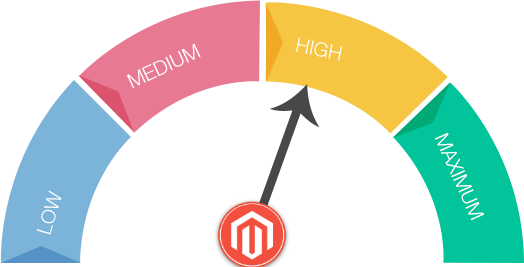
Research shows that site abandonment happens after 3 seconds. Therefore performance optimization is highly essential for a website. Especially when it comes to Magento ecommerce websites, it gets all the more crucial for your site to load fast and operate optimally.
The equation is simple – slow site directly equals slow sales. A lagging site or even lagging product page could cost you millions in terms of revenue.
Performance optimization for Magento need not be a daunting task if done properly.
Caching in Magento:
The first and foremost task is to enable caching in Magento. This can be done by going to System and cache management in the admin panel.
Unneeded Magento Modules:
Disabling unneeded Magento modules will result in the utilization of fewer resources. Modules can be disabled via the admin panel or by editing the XML file in this path: app/etc/modules.
Smaller Ecommerce Stores – Try Flat Catalogs:
Smaller ecommerce websites can greatly benefit from moving to a flat catalog structure rather than using EAV structure.
Images Must Be Compressed:
Compressing images can greatly improve performance. Images PNG and JPG can be easily compressed to reduce the bandwidth between the browser and the server. Remember that not only the images used in the skin, but also the images used in the products and catalogs can be compressed.
Output compression for PHP:
Enable the PHP-setting zlib.output_compression. With this, the PHP output that is sent to the browser is compressed. This saves a lot of bandwidth too. Using Apache mod_deflate module is a good idea as well. That allows the compression of no PHP output such as CSS, Java Script as well as other plain text files.
Session Storage:
Sessions could have two types of storage either in the database or in files. If the database performs well, this could have a great impact on the performance of your site. But if databases lag, it’s a good idea to use files.
Use PHP Accelerators:
Use of PHP accelerators is a good idea. APC, ZendOptimizer+, eAccelerator, XCache. They work just fine and flawlessly with Magento.
Tune PHP realpath_cache:
Set the PHP realpath_cache_size to say 128K (default is 16K) and the realpath_cache_ttl to 86400. This could increase your website speed.
Use Apache mod_expires:
With this, you can tell the browser which files to keep in cache and for how long.
Magento logging Options:
Magento logging could lead to more and more files written to the file system. This leads to slowing down of the ecommerce website. Disabling them is a good idea – unless you are debugging.
MySQL Table Optimization:
A cluttered database table could slow down your site. You can use phpMyAdmin, and run the command OPTIMIZE TABLE for specific Magento database-tables.
W3C Compliance – good idea:
It’s always good to stick to standards. Although there may be arguments that this is not a very important step, its better to have a clean code than to have the browser interpret a bundle of errors.
W3C Compliance – good idea:
It’s always good to stick to standards. Although there may be arguments that this is not a very important step, its better to have a clean code than to have the browser interpret a bundle of errors.
Beware 404 errors:
Check Apache logs for 404 errors. These errors are generated for every page that is not found in either because style sheet is not found or image. Get these sorted out.
Merge CSS and JavaScript:
CSS and Javascripts can be merged to one big file that will require only the HTTP request by the browser to fetch the data. Your bandwidth is saved. The good news is Magento 1.4 can merge CSS and in this, JavaScripts are merged by default.
MySQL server tuning:
For databases, it’s useful to tune the settings like query_cache_size. This can greatly improve performance.
Serve static content through a CDN:
The static content like images, CSS-stylesheets or JavaScript-files can be delivered via separate servers that are closest to the user visiting your website. This ensures fast delivery.
Disable local Magento modules is a good idea too. Although there is no perfect list of factors for performance tuning, this was a list of ideas that could help most Magento stores. Performance tuning could vary from website to website. Yet there are some things we very easily overlook. This was a list of pointers that could help you with performance tuning your Magento ecommerce store.

